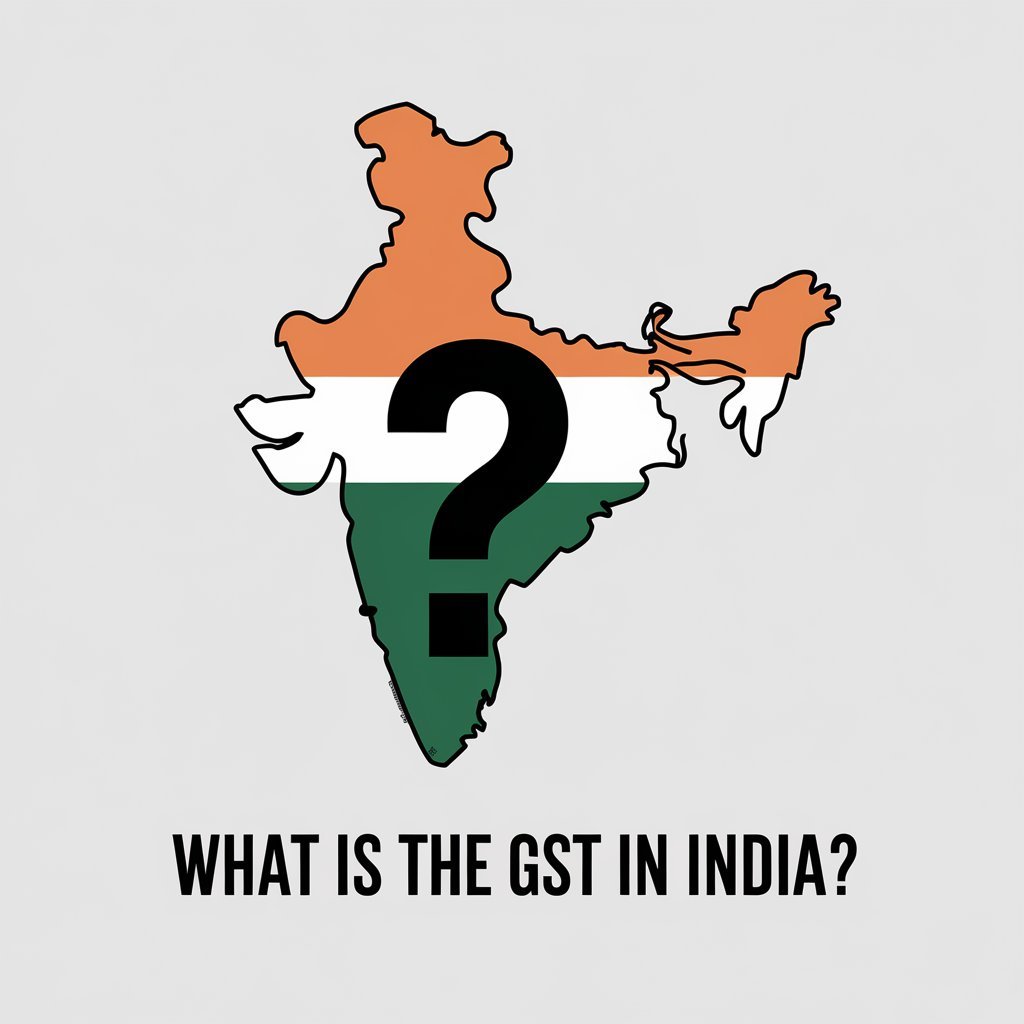Moreover, this blog analyzes the top 10 importance of GST in India. It shows how it is useful for increasing the efficiency of the economy, increasing business competitiveness, making it transparent as well as for the rapid progress of the country’s economy. For goods and services supplied in India, GST has become the new system after its effective implementation in the year 2017. Given that GST is an indirect tax system in India, the role of this tax can be effective while integrating taxes well across the country, easing the compliance process and contributing to economic growth.
- What is the GST in India?
- What are the Top 10 Importance of GST in India?
- 1. Removal of Cascading
- 2. Better Logistics
- 3. Simplifying the Taxation System
- 4. A Uniform Tax System
- 5. Government Revenue
- 6. Improved Input Tax Credit
- 7. Increase Tax Compliance
- 8. Lesser Compliances
- 9. Multiple Tax Slabs
- 10. Boost to the Economy
- Conclusion
- FAQs
What is the GST in India?
GST is a comprehensive, multi-point, specific, destination-based consumption tax on goods and services in India. GST, which came into effect on 1 July 2017, has replaced multiple indirect taxes such as excise duty, service tax, and VAT and standardized the Indian taxation structure under one umbrella.
1. One Nation, One Tax: The single classification system is free from the increasing cost of taxes that are incurred under the multi-tax system.
2. Destination-based tax: imposed at the consumer end of the supply chain.
3. Input Tax Credit (ITC): Reduces the amount of taxes payable for businesses hence the name ‘tax shield’.

What are the Top 10 Importance of GST in India?
1. Removal of Cascading
2. Better Logistics
3. Simplifying the Taxation System
4. A Uniform Tax System
5. Government Revenue
6. Improved Input Tax Credit
7. Increase Tax Compliance
8. Lesser Compliances
9. Multiple Tax Slabs
10. Boost to the Economy
To Filing GST Return Contact Our Expert Legal Adviser

1. Removal of Cascading
However, the impact of the introduction of GST on the country’s economy has been that it has eliminated the cascading tax effect. Before the introduction of GST, taxes were levied on taxes, commonly referred to as “tax on tax”. For example, excise duty was levied on the manufacturing cost of products, while VAT was levied on the price of products including excise duty. This led to a situation that created additional costs for both organizations and individuals.
The credit point under GST is ITC or input tax credit which enables a business to claim credit on taxes paid on inputs, so that only value addition at each stage is taxed. As a result, the size of the tax has been reduced and the organization of taxation has been optimized for the benefit of companies as well as customers.
2. Better Logistics
1. Simplified tax structure: Many unnecessary taxes have been eliminated and consolidated into one tax.
2. No cascading effect: Most of the input tax credits are beneficial in decreasing the taxes-on-tax burden.
3. Economic growth: Boosts investment and trade.
4. Transparency: Digital processes reduce tax evasion.
5. Supports manufacturing: Reduces production costs, and aids the ‘Make in India’ initiative.
6. Interstate trade: Eliminates entry taxes and barriers.
7. Improved logistics: Fewer checkpoints and taxes improve supply chain efficiency.
8. Uniform rates: Standardised taxes ensure uniformity across the country.
9. Consumer benefits: Lower prices and better transparency.
10. Ease of doing business: Simplified compliance across states.
3. Simplifying the Taxation System
GST has made the Indian taxation system efficient by replacing several indirect taxes including VAT, excise duty, and service tax with just one tax known as GST. It reduces the costs associated with tax collection and use and integrates tax systems to avoid the presence of multiple systems at different levels of government. By providing a single digital interface for registration, payment, and filing of returns, GST also brings efficiency and consistency in the process of tax compliance, and thereby simplifies and rationalizes the structure of the GST system and taxes to be paid for businesses and individuals.

4. A Uniform Tax System
GST has created a consistent structure of taxes in India, rather than indirect taxes spread across different sections. Earlier they were burdened with multiple taxes like VAT, excise duty, and service tax which had different structures in different states. GST has amalgamated all these into a single system to streamline the tax rates and laws in the country.
1. Ease of compliance: Businesses follow uniform rules, reducing confusion and compliance costs.
2. Regional disparities are eliminated: Uniform rates ensure that there are no state-specific variations in taxation, thereby promoting equality.
3. Promotion of inter-state trade: Seamless movement of goods and services across state borders, without additional charges such as octroi or entry tax.
4. Encouraging investment: Predictable tax policies and fewer complexities attract domestic and foreign investments.
5. Simplified Supply Chain: Businesses can optimize logistics without worrying about tax differences between states.
5. Government Revenue
1. Broadens the tax base: Brings more businesses under taxation.
2. Reduces evasion: Digital systems and input tax credits discourage evasion.
3. Efficient collection: Unified structure streamlines processes.
4. Increases compliance: Mandatory registration and filing promote compliance.
5. Consumption-based: Higher consumption equals higher revenue.
6. Prevents leakage: Technology reduces revenue losses.
7. Uniform rates: Standardised rates ensure stable collections.
6. Improved Input Tax Credit
The GST Input Tax Credit (ITC) system allows businesses to claim credit for taxes paid on purchases, thereby reducing the overall tax liability.
1. Seamless credit: ITC is available at every stage of the supply chain.
2. No cascading tax: Eliminates tax on tax, thereby reducing the final tax burden.
3. Capital goods: ITC can be claimed on capital goods over time.
4. Wider eligibility: More goods and services are eligible for ITC.
5. Invoice matching: Purchase and sales invoices must be matched, ensuring valid claims.
6. ITC on imports: Credit can be claimed on imported goods/services.
7. Simplified process: ITC claims have been made easier through the GSTN portal.
8. Better compliance: Checks and verifications promote transparency and reduce evasion.
7. Increase Tax Compliance
Input Tax Credit (ITC) under GST allows businesses to claim credit for taxes paid on inputs, thereby reducing the overall tax burden and improving cash flow.
1. Eliminates cascading taxes: ITC reduces the “tax on tax” effect, thereby reducing production costs.
2. Enhances cash flow: Businesses can offset tax liability, thereby improving liquidity.
3. Encourages compliance: Businesses are encouraged to maintain proper records and file returns.
4. Reduces costs: Lower production costs lead to more affordable goods and services.
5. Promotes growth: Savings from ITC can be reinvested in business expansion.
6. Increases tax system efficiency: ITC ensures transparency and reduces fraud.
7. Promotes interstate trade: ITC on interstate purchases reduces trade costs.

8. Lesser Compliances
One of the significant benefits of the Goods and Services Tax (GST) in India is that it reduces the compliance burden on businesses. Find out how.
1. Unified tax system: Merges multiple taxes into a single system, reducing compliance complexity.
2. Simplified returns: Fewer returns to file, streamlining the process.
3. E-filing: Automated online filing reduces paperwork and errors.
4. Quarterly filing for small businesses: Businesses with turnover of less than ₹5 crore can file quarterly returns.
4. Less documentation: Simplified record-keeping with basic transaction details.
5. Centralised tax collection: Streamlined process for both businesses and the government.
9. Multiple Tax Slabs
Like most taxing systems of the world, GST has various tax rates for a variety of products of different categories to make an economic impact on a particular product line. The GST Council decided on the following five main tax slabs.
1. 0%: Essential goods such as unbranded food and medicines.
2. 5%: Goods such as grocery items and transport services.
3. 12%: Processed food, mobile phones and computers.
4. 18%: Toothpaste, soap and furniture.
5. 28%: Luxury goods such as cars, electronics and alcoholic beverages.
10. Boost to the Economy
The introduction of GST in India has provided a significant boost to the economy through various mechanisms:
1. Improved tax collection: Streamlined process raises revenue for infrastructure and welfare programs.
2. Ease of doing business: A simplified tax system encourages entrepreneurship, especially among SMEs.
3. Attract investments: A transparent system promotes both domestic and foreign investments.
4. Lower production costs: Lower cascading taxes make Indian products more competitive.
5. Optimised logistics: Elimination of entry taxes streamlines interstate trade and reduces costs.
6. Export growth: Harmonised tax rates improve India’s export competitiveness.
7. Enhanced tax compliance: Digital filing ensures better compliance and a stable economy.
8. Job creation: Economic growth leads to more job opportunities across various sectors.

Conclusion
The introduction of GST has indeed made India’s taxation system much simpler and more effective. Since GST removed the cascading effect of taxes, reduced production costs, and rationalized compliance procedures, the domestic and international competitiveness of businesses has improved. It has increased national revenue, accelerated economic growth, and promoted the formation of a unified national market—the benefits of GST range from promoting inter-state trade to boosting exports and attracting investments. In conclusion, GST has played a vital role in restructuring the Indian tax system and bringing about the economic transformation necessary for the country’s development.
FAQs
Q1. What is the importance of GST in India?
Some of the positive impacts of GST in India include; a reduction in tax structure, a reduction in manufacturing cost, promotion of economic growth, and clarity. It facilitates doing business in India, increases government tax collection efficiency, and develops inter-state trade, business, and investment, making India more competitive.
Q2. Who passed GST in India?
It may be noteworthy to inform those readers who are not overly familiar with the fiscal policies of India that the Goods and Services Tax (GST) has been approved by the Indian Parliament. The GST bill was passed in the Lok Sabha on 29th March 2017 and Rajya Sabha on 6th April 2017. It was then gazette and enacted into law on April 12, 2017, by President of India Pranab Mukherjee. It was supposed to come into effect on July 1, 2017, and it did so.
Q3. Who introduced GST first in the world?
France was the first country in the world to introduce GST (or VAT) in 1954.
Q4. What type of tax is GST?
GST is an indirect tax charged on the supply of goods and services cumulatively or individually. It is a destination–based tax that subsumes several indirect taxes such as VAT, excise duty, and service tax in India and levied at multiple stages.
Q5. What is the importance of GST return?
Thus we can say the importance of GST returns relate to the fact that it checks compliance with the Goods and Services Tax. Filing of GST returns assists businesses to report their sales, purchases and their tax obligation, claims for input tax credit and correct payment of taxes. Filing on time will prevent one for being charged, l, rightful taxation will be achieved and also help the government revenue.


Add a Comment